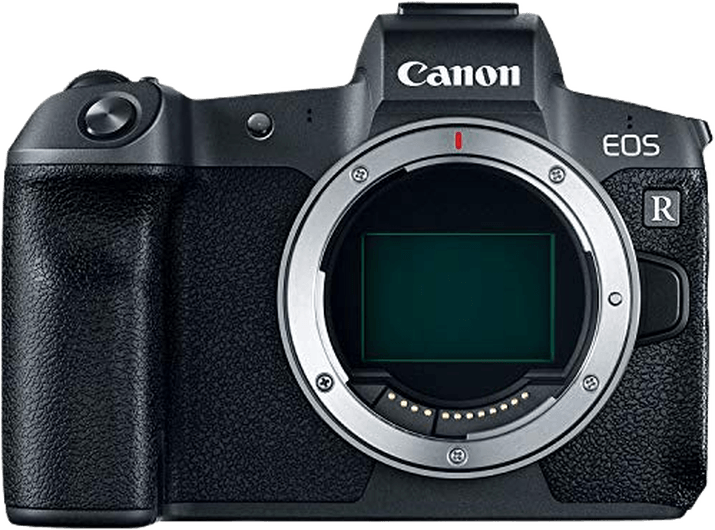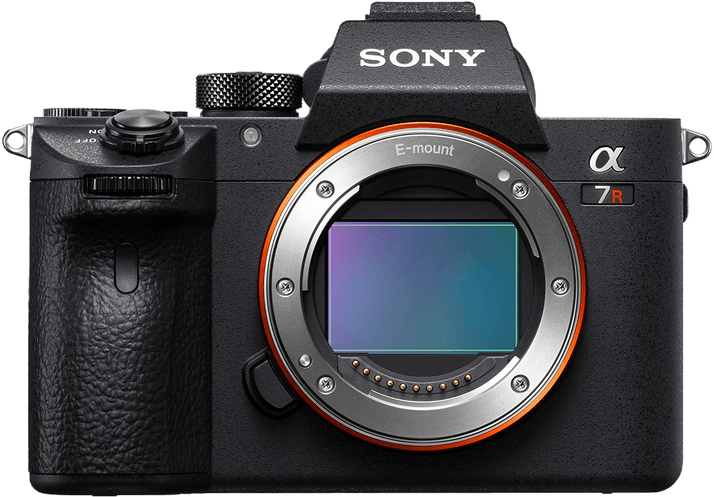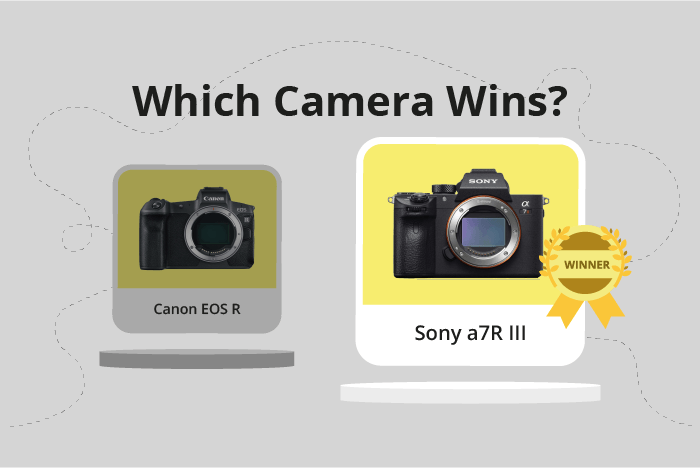Canon EOS R vs Sony a7R III Comparison
Canon EOS R

Sony a7R III

The Sony a7R III outperforms the Canon EOS R with a score of 83/100 compared to Canon’s 74/100. Both cameras are mirrorless and were released in 2017 and 2018, respectively. They share similarities in size and weight, with the Sony a7R III being slightly smaller and heavier than the Canon EOS R.
The Sony a7R III excels with its higher score due to its superior performance, despite its higher launch price of $3200 compared to the Canon EOS R’s $2300. On the other hand, the Canon EOS R holds an advantage in its lighter weight of 485g, making it more portable and comfortable to carry.
To sum up, the Sony a7R III is the better camera based on its performance and score, while the Canon EOS R offers a more budget-friendly and lightweight option for those prioritizing portability.
Canon EOS R vs Sony a7R III Overview and Optics
The Sony a7R III emerges as the winner in optics, scoring 84/100, while the Canon EOS R trails behind with a score of 73/100. Both cameras share common specifications, including a CMOS sensor, full-frame sensor size, and compatibility with their respective lens mounts – Canon RF for the EOS R and Sony FE for the a7R III.
The Sony a7R III outperforms the Canon EOS R with its higher megapixel count of 42.4, compared to the Canon’s 30.3 megapixels. This difference translates to better image resolution and detail. Furthermore, the Sony a7R III boasts a faster shooting speed of 10 frames per second, as opposed to the Canon EOS R’s 8 frames per second. The a7R III also excels with its DXOMARK sensor score of 100, while the EOS R has a score of 89. Lastly, the Sony a7R III offers image stabilization, a feature absent in the Canon EOS R.
On the other hand, the Canon EOS R has a Digic 8 processor, which is a newer generation than the Sony a7R III’s Bionz X processor. However, this advantage does not translate to a significant edge in performance or image quality.
To conclude, the Sony a7R III offers superior optics, with a higher megapixel count, faster shooting speed, better sensor score, and image stabilization. The Canon EOS R, while possessing a newer processor, falls short in other key aspects of the optics comparison. Consequently, the Sony a7R III is the better choice for photographers seeking top-notch optics in their camera.
Canon EOS R vs Sony a7R III Video Performance
The Canon EOS R triumphs over the Sony a7R III in video capabilities with a video score of 70/100, a 14-point lead over the Sony a7R III’s score of 56/100. Both cameras share some common specifications, including a maximum video resolution of 4K and maximum video dimensions of 3840 x 2160. Additionally, both cameras can record at a maximum video frame rate of 30fps.
The Canon EOS R’s superior video score is due to its built-in time-lapse functionality. This feature allows users to capture stunning time-lapse videos without the need for additional equipment or software. The time-lapse function is a valuable asset for videographers and photographers who wish to create dynamic, time-compressed videos showcasing movement and change.
On the other hand, the Sony a7R III lacks built-in time-lapse functionality. This absence may not be a deal-breaker for some users, as time-lapse videos can still be created using external intervalometers or software solutions. However, the absence of this feature makes the Sony a7R III less convenient for time-lapse enthusiasts compared to the Canon EOS R.
Considering the video capabilities, the Canon EOS R holds an advantage over the Sony a7R III. Its higher video score and built-in time-lapse functionality make it a more attractive option for videographers looking for a well-rounded camera. While the Sony a7R III shares some similar specifications, its lack of built-in time-lapse functionality slightly diminishes its appeal in the realm of video creation.
Canon EOS R vs Sony a7R III Features and Benefits
The Canon EOS R outperforms the Sony a7R III in features, scoring 87/100 compared to the latter’s 83/100. Both cameras share several specifications, including touchscreen capabilities, flip screens, GPS absence, and integrated WIFI and Bluetooth.
The Canon EOS R excels with its larger screen size of 3.2 inches, compared to Sony a7R III’s 3-inch screen. Additionally, the EOS R boasts a higher screen resolution of 2,100,000 dots, providing sharper and more detailed images than the a7R III’s 1,440,000 dots. These advantages make the Canon EOS R a better choice for photographers who prioritize screen size and image quality.
On the other hand, the Sony a7R III has its own merits. While it may not surpass the Canon EOS R in features, it still offers a solid set of specifications. It matches the EOS R in terms of touchscreen capabilities, flip screen, and connectivity options. The a7R III’s slightly smaller screen size and lower resolution do not necessarily make it an inferior camera, as it still provides a high-quality user experience.
In comparing the feature sets of both cameras, the Canon EOS R takes the lead with its larger screen size and higher resolution. However, the Sony a7R III remains a strong contender, offering similar specifications with only minor differences. Ultimately, the choice between these two cameras will depend on individual preferences and priorities, as both provide reliable performance and advanced features.
Canon EOS R vs Sony a7R III Storage and Battery
The Sony a7R III outperforms the Canon EOS R in storage and battery, scoring 65/100 compared to the Canon’s 35/100. Both cameras accept SD, SDHC, and SDXC memory cards, and are UHS-II compatible. However, the Sony a7R III has a clear advantage with two memory card slots, while the Canon EOS R has only one.
In terms of battery life, the Sony a7R III offers 650 shots per charge, using an NP-FZ100 battery. On the other hand, the Canon EOS R provides 370 shots per charge, utilizing an LP-E6N battery. The longer battery life makes the Sony a7R III a more reliable choice for extended shooting sessions.
The Canon EOS R compensates with USB charging capability, which the Sony a7R III lacks. This feature allows for convenient charging on-the-go and can be a beneficial addition for photographers in need of a quick power boost.
Taking these factors into account, the Sony a7R III proves to be superior in storage capacity and battery life, while the Canon EOS R offers the advantage of USB charging.
Canon EOS R vs Sony a7R III – Our Verdict
Are you still undecided about which camera is right for you? Have a look at these popular comparisons that feature the Canon EOS R or the Sony a7R III:

